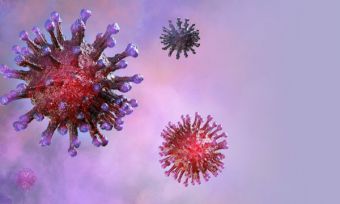Co-Author: Nicole Barratt
As the number of novel coronavirus infections rises across the world, people are reaching for hand sanitisers to try to prevent its spread. The World Health Organisation (WHO) – which recently declared the virus an international public health emergency – has issued a list of preventative measures, including a recommendation for people to clean their hands with an alcohol-based hand rub, commonly known as hand sanitiser.
Countdown reported recently it’s had to bring in extra stock for hand sanitisers, antiseptic liquids and antibacterial sprays – particularly Dettol – with people buying them in bulk on a daily basis. People have also been scouring Trade Me for hand sanitiser and face masks. The online auction site has seen a significant jump in people searching for the terms in light of the coronavirus outbreak.
Price gouging: Kiwis trying to make money off coronavirus https://t.co/0NZpeqJoDF pic.twitter.com/x1mkhh4AfZ
— Newshub (@NewshubNZ) March 3, 2020
With hand sanitiser-fever in full swing around the country, we did some digging and found some surprising facts about the lotions boasting to be bug killers:
1. Washing your hands is the best defence
While it may seem simple, thoroughly washing your hands with soap under running water is generally considered best practice. The New Zealand Ministry of Health recommends washing your hands regularly. You should wash your hands thoroughly with soap and water for at least 20 seconds, making sure you dry them thoroughly. Only use hand sanitiser if soap and water are not available.
The US-based Center for Disease Control and Prevention (CDC) also recommends the use of soap and water whenever possible, as it is the most effective method for removing all types of germs from your hands. That’s because, according to the CDC, while alcohol-based sanitiser quickly reduces the number of microbes on your hands in some situations, the liquid doesn’t eliminate all germs. And soap and water can be more effective at removing certain kinds of germs and viruses, such as vomiting and diarrhoea culprits cryptosporidium, norovirus and clostridium difficile.
How to handwash?
Use 🧼 and water for at least 40-60 secondsHow to handrub?
Use alcohol-based handrub 🧴 for 20-30 seconds #coronavirus pic.twitter.com/cubysvZWek— World Health Organization (WHO) Western Pacific (@WHOWPRO) February 2, 2020
2. The label ‘antibacterial’ or ‘antimicrobial’ does not always mean it works better
Although it sounds good, hand sanitisers that claim to be ‘antibacterial or ‘antimicrobial’ may not be as effective and could even possibly be worse for your health than other hand sanitisers, according to some studies.
Firstly, using antibacterial sanitiser can kill the good bacteria on your hands as well as the bad, which could potentially lower your resistance to disease. And overexposure to antibiotics in general may lead to bacterial resistance and the formation of superbugs. Superbugs have evolved to resist many types of antibacterials, which is why alcohol-based sanitisers are now used in clinical settings such as hospitals.
Thirdly, an active ingredient in many antibacterial and antimicrobial products is triclosan. While it is already banned for use in over-the-counter consumer products in America, triclosan can be found in various New Zealand household products like toothpaste and cosmetics. It is controversial because the effects of the agent on hormonal balance and bacterial resistance are relatively unknown and it has even been linked to a higher risk of osteoporosis in women, in recent medical studies. New Zealand’s Environmental Protection Authority sets maximum limits for triclosan of 0.3% in cosmetics, toothpaste and mouthwashes.
Supermarkets limit hand sanitiser to 'two per customer' https://t.co/GeVBj2PJHc pic.twitter.com/6QlOVJanX6
— Newshub (@NewshubNZ) February 6, 2020
3. Products with at least 60% alcohol tend to work best
If soap and water are not available, an alcohol-based hand sanitiser that is at least 60% alcohol is the most effective way to kill germs, according to the Ministry of Health. Sanitisers that contain less than 60% alcohol are less likely to work equally on all types of germs and generally only minimise the growth of bacteria, rather than eliminating germs completely.
According to research conducted by the University of Toronto, 70% alcohol concentrate is the most effective, more so than 90%, as water can help the alcohol in a hand sanitiser to better penetrate germ cells. Another thing to keep in mind is that alcohol-based hand sanitisers primarily contain ethanol, which can cause alcohol poisoning if swallowed. Sanitisers that are attractively packaged or scented may be particularly tempting for young children, so use them with parental supervision.
4. It won’t work if your hands are dirty or greasy
While hand sanitisers have proven to successfully combat germs in clinical environments such as hospitals, they are less effective if your hands are visibly dirty or greasy. Real world scenarios like eating or handling food, going to the gym or gardening may reduce the effectiveness of hand sanitiser, and in these cases washing your hands with soap and water will probably be more effective.
5. You have to let it dry completely
Hand-sanitiser needs to be applied correctly for it to effectively kill germs and eliminate them from your hands. Not applying an adequate amount or accidentally wiping it off before it has dried are common causes of sanitiser misuse. The CDC recommends following the label of your hand sanitiser to determine the correct amount needed and covering all surfaces of both hands when you apply it until they are dry.
Has talk around coronavirus got you thinking about your own wellbeing and health insurance? Compare health insurance providers for free with Canstar by hitting the button below.




Share this article